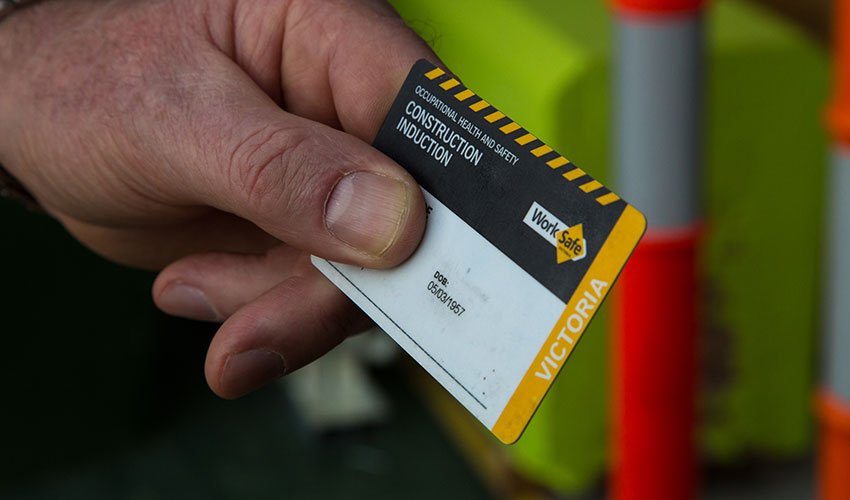Why You Need a White Card in Australia
Introduction
In Australia, the White Card is a mandatory requirement for anyone looking to work in the construction industry. This certification not only demonstrates that you have completed the necessary training in health and safety practices, but it also serves as proof of your commitment to creating a safe working environment. With safety being a paramount concern in construction, understanding the significance of the White Card is crucial for all workers. In this article, we will explore why obtaining a White Card is essential, the benefits it offers, and the key components of the training involved.
What is a White Card?
The White Card, officially known as the Construction Induction Training Card, is a certification that indicates a worker’s understanding of workplace health and safety standards within the construction environment. It is a legal requirement for anyone who wishes to work on construction sites across Australia. The White Card is recognized nationally, ensuring that workers meet the same safety standards regardless of their location in the country.
The Importance of the White Card
1. Legal Requirement
One of the primary reasons you need a White Card is that it is a legal requirement in Australia. The Work Health and Safety (WHS) legislation mandates that all construction workers must complete a nationally recognized training program to be eligible to work on site. This law protects both workers and employers by ensuring that everyone on a construction site is trained in safe work practices. Without a White Card, you cannot legally work on a construction site, which limits your job opportunities in the industry.
2. Promoting a Safe Work Environment
Safety is the cornerstone of the construction industry. The White Card Course provides participants with essential training on identifying hazards, assessing risks, and implementing safety measures. By obtaining your White Card, you are contributing to a safer work environment for yourself and your colleagues. Understanding how to recognize potential dangers and knowing how to respond can significantly reduce the likelihood of accidents and injuries on site.
3. Enhanced Employment Opportunities
In today’s competitive job market, having a White Card can set you apart from other candidates. Many employers require job applicants to hold a valid White Card before considering them for positions on construction sites. By obtaining this certification, you enhance your employability and increase your chances of securing a job in the construction industry. Additionally, some employers may offer better pay or benefits to those who hold a White Card, as it reflects a commitment to safety and professionalism.
4. Skills Development
The White Card Course is designed to equip participants with vital skills and knowledge that are applicable in various roles within the construction industry. Participants learn about workplace health and safety legislation, safe work practices, emergency procedures, and communication strategies. This training not only prepares individuals for the specific demands of their jobs but also fosters a culture of safety that benefits everyone on site.
What You Will Learn in the White Card Course
The White Card Course covers a wide range of topics to ensure participants are well-versed in health and safety practices. Here are some key areas of focus:

Why You Need a White Card in Australia
1. Understanding Work Health and Safety Legislation
Participants are introduced to the WHS legislation that governs construction work. This includes the responsibilities of employers and workers, the importance of compliance, and the implications of failing to adhere to safety regulations. Understanding these laws is crucial for ensuring a safe working environment.
2. Hazard Identification and Risk Assessment
A significant portion of the course is dedicated to identifying potential hazards in the workplace. Participants learn how to assess risks associated with these hazards and develop control measures to mitigate them. This knowledge empowers workers to proactively address safety concerns before they lead to accidents.
3. Safe Work Practices
The course emphasizes the importance of following safe work practices. Participants learn about the proper use of personal protective equipment (PPE), handling tools and machinery, and adhering to safety protocols. Understanding these practices helps reduce the risk of injury and ensures compliance with workplace safety standards.
4. Emergency Procedures
Knowing how to respond in emergencies is a vital skill for all construction workers. The White Card Course teaches participants about emergency procedures, including evacuation plans, incident reporting, and basic first aid. Being prepared for emergencies can make a significant difference in how incidents are managed and can save lives.
5. Communication and Reporting
Effective communication is crucial in maintaining a safe work environment. Participants learn how to report hazards and unsafe practices, fostering a culture of safety on site. Open communication ensures that safety concerns are addressed promptly, reducing the likelihood of accidents.
How to Obtain Your White Card
Obtaining your White Card is a straightforward process that involves the following steps:
1. Choose a Registered Training Organization (RTO)
The first step is to select a registered training organization (RTO) that offers the White Card Course. It is essential to ensure that the RTO is recognized by the relevant authorities to issue valid White Cards. Research different providers to find one that suits your needs and preferences.
2. Check Course Availability
Once you have chosen an RTO, check their course schedule and availability. Many organizations offer both face-to-face and online training options, providing flexibility for participants. Consider your schedule and choose a format that works best for you.
3. Complete the Enrollment Process
After selecting an RTO, complete the enrollment process. This typically involves filling out an application form and paying the course fee. Fees can vary depending on the provider, so it is advisable to compare costs and choose an option that fits your budget.
4. Attend the Course
Upon enrollment, attend the course sessions as scheduled. Engage actively with the material, participate in discussions, and complete any assessments. Your commitment to learning will enhance your understanding of the content and prepare you for the assessment.
5. Receive Your White Card
After successfully completing the course and assessments, you will receive your White Card. Keep this certification safe, as you will need to present it to employers when applying for jobs in the construction industry.
Conclusion
In summary, obtaining a White Card is essential for anyone looking to work in the construction industry in Australia. This certification not only fulfills a legal requirement but also promotes safety and enhances employment opportunities. By completing the White Card Course, you gain vital skills and knowledge that contribute to a safer work environment. With the construction industry continuing to grow, obtaining your White Card is a crucial step towards a successful career in this dynamic field.
With the knowledge gained from the White Card Course, you are better equipped to navigate the challenges of the construction industry while ensuring your safety and the safety of those around you.

